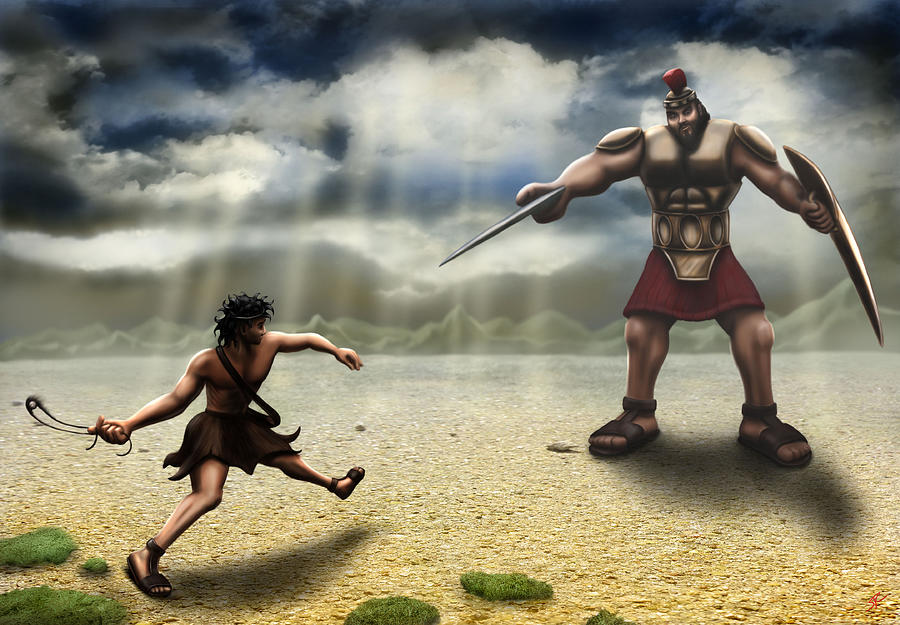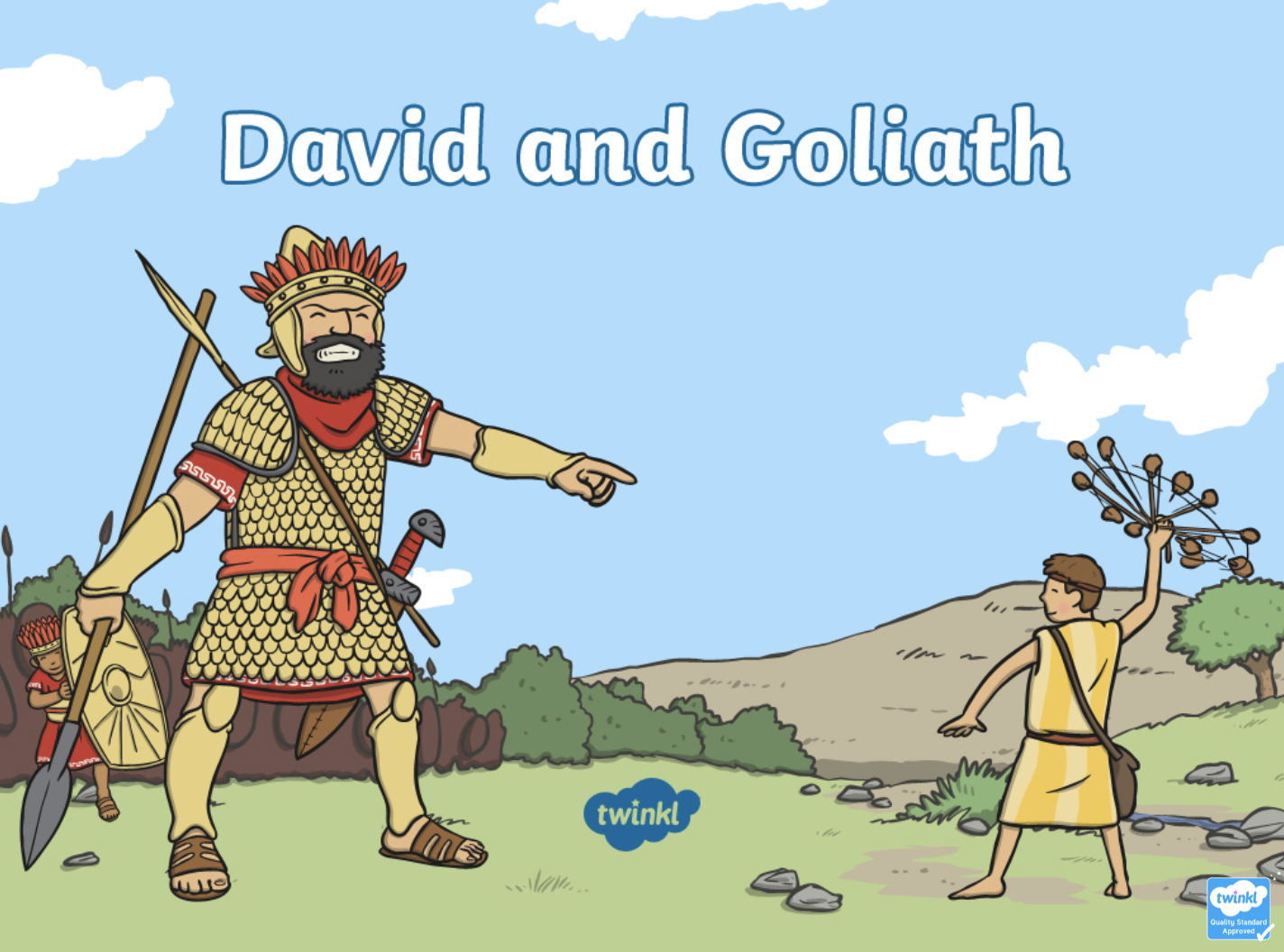Biblical Narrative and Symbolism
The story of David and Goliath is a well-known biblical narrative that has been interpreted and analyzed for centuries. It is a tale of an underdog’s victory over a seemingly invincible opponent, and it has been used to illustrate themes of faith, humility, and divine intervention.
In the timeless tale of David and Goliath, the underdog triumphed over the seemingly insurmountable giant. Similarly, in modern times, the term “tailgate meaning” signifies the underdog’s ability to challenge and potentially overcome the odds. Just as David used his wit and agility to defeat Goliath, so too can individuals and organizations use strategy and innovation to level the playing field, echoing the enduring spirit of David and Goliath.
The story is found in the First Book of Samuel in the Hebrew Bible. It tells the story of David, a young shepherd boy, who is chosen by God to be the next king of Israel. David is sent to fight the Philistines, who are led by a giant named Goliath. Goliath is a fearsome warrior, and the Israelites are terrified of him. But David is not afraid. He trusts in God and goes out to fight Goliath with only a sling and a few stones.
In the realm of underdogs, the tale of David and Goliath looms large, a testament to the triumph of the small over the mighty. Similarly, the “buttermilk fairy tale” explores the unexpected triumph of a humble girl , who, armed with her buttermilk, challenges and ultimately overcomes the giant of adversity.
Like David, she wields her small but potent weapon with unwavering determination, proving that even in the face of overwhelming odds, courage and resourcefulness can prevail.
Historical and Religious Significance
The story of David and Goliath is a significant event in the history of Israel. It is a story of hope and victory, and it has been used to inspire people for centuries. The story is also a reminder of the power of God. David was able to defeat Goliath because he trusted in God. He knew that God was on his side, and he was not afraid to fight.
In the epic battle of David and Goliath, the shepherd boy triumphed against all odds, exemplifying the timeless concept of “rags to riches” ( rags to riches meaning ). This idiom captures the extraordinary journey from humble beginnings to extraordinary success, much like David’s victory over the giant Goliath.
Symbolic Meanings and Interpretations
The story of David and Goliath has been interpreted in many different ways. Some people see it as a story about the triumph of good over evil. Others see it as a story about the importance of faith and trust. Still others see it as a story about the power of the underdog.
- David represents the underdog. He is small and weak, but he is able to defeat Goliath because he trusts in God.
- Goliath represents the forces of evil. He is large and powerful, but he is no match for David’s faith.
- The stone that David uses to kill Goliath represents the power of God. It is a small and insignificant object, but it is able to defeat Goliath because it is wielded by David’s faith.
Theological Implications
The story of David and Goliath has a number of theological implications. It teaches us that God is on the side of the underdog. It also teaches us that faith is more powerful than strength. And it teaches us that God can use even the smallest and most insignificant things to accomplish his purposes.
Cultural Impact and Adaptations: David And Goliath

The David and Goliath story has resonated with audiences for centuries, inspiring countless works of art, literature, and popular culture. Its enduring appeal lies in its timeless themes of courage, faith, and the triumph of the underdog.
Paintings and Sculptures
From the iconic paintings of Michelangelo and Caravaggio to the monumental sculptures of Donatello and Bernini, artists have depicted the David and Goliath story in various styles and mediums. These works often capture the dramatic tension and emotional intensity of the biblical narrative, conveying the contrasting physical prowess of Goliath and the unwavering faith of David.
Literature
The David and Goliath story has been adapted into countless literary works, from children’s books to epic poems. In his play “David and Goliath,” George Bernard Shaw reinterpreted the story as a commentary on the futility of war. Other authors, such as Rudyard Kipling and Ernest Hemingway, have used the story as a metaphor for overcoming adversity and achieving success.
Films and Music
The David and Goliath story has been adapted for the big screen in numerous films, including the 1951 classic starring Gregory Peck and the 2009 animated film “Goliath.” In music, the story has inspired songs by artists ranging from Bob Dylan to Bruce Springsteen, who wrote “The Promised Land” as a modern-day interpretation of the biblical tale.
Cultural Significance
The David and Goliath story has held cultural significance in different historical periods and societies. In medieval Europe, the story was used to inspire knights and warriors, while in the American colonies, it became a symbol of the struggle for independence. Today, the story continues to resonate with people of all ages and backgrounds, offering a message of hope and encouragement in the face of challenges.
Modern Applications and Lessons

The story of David and Goliath continues to resonate in the modern world, offering valuable lessons for individuals and organizations facing adversity. It underscores the importance of courage, faith, and resourcefulness in overcoming challenges.
The story highlights the power of belief and self-confidence. David’s unwavering faith in God gave him the courage to confront Goliath, despite the overwhelming odds against him. Similarly, individuals and organizations can draw inspiration from David’s example to believe in their abilities and overcome self-doubt.
Strategies for Resilience and Innovation, David and goliath
- Identify your strengths and weaknesses: David knew his strengths lay in his agility and his ability to use a slingshot. He used his strengths to his advantage, compensating for his physical disadvantage against Goliath.
- Be creative and resourceful: David’s use of a slingshot was an unconventional and creative solution to defeat Goliath. Organizations can foster innovation by encouraging employees to think outside the box and challenge traditional approaches.
- Embrace collaboration: David’s victory was not only due to his own efforts but also to the support of his people. Collaboration and teamwork can help individuals and organizations achieve greater success.
The story of David and Goliath also emphasizes the importance of perseverance and resilience. Despite facing setbacks and ridicule, David never gave up on his goal of defeating Goliath. Individuals and organizations can learn from David’s example by developing a strong work ethic and a never-say-die attitude.
Principles for Success
- Overcome fear: Fear can be a paralyzing force, but David’s courage and determination allowed him to overcome his fear of Goliath. Individuals and organizations can develop strategies to manage fear and focus on their goals.
- Take calculated risks: David’s decision to confront Goliath was a calculated risk, but it was one that paid off. Individuals and organizations can learn to assess risks and make informed decisions that can lead to success.
- Embrace humility: Despite his victory, David remained humble and acknowledged God’s role in his success. Humility can help individuals and organizations avoid arrogance and stay grounded in their values.
In conclusion, the story of David and Goliath provides timeless lessons for individuals and organizations facing adversity. By embracing courage, faith, resourcefulness, resilience, and humility, we can overcome challenges, achieve success, and make a positive impact on the world.
David and Goliath, a classic tale of an underdog’s triumph, illustrates the underdog meaning : an individual or group perceived as having a lower chance of success. Goliath, a giant Philistine warrior, towered over the young shepherd boy David. Yet, with unwavering faith and a well-aimed stone, David overcame the odds, demonstrating that even the smallest can triumph over adversity, reminding us that hope and courage can prevail against formidable opponents.
In the annals of cinematic history, the tale of David and Goliath has served as a timeless allegory for the triumph of the underdog. Similarly, the genre of underdog movies celebrates the resilience and determination of those who defy the odds.
Just as David’s slingstone felled the mighty giant, these films inspire us to believe that even the most formidable adversaries can be overcome with courage and ingenuity.